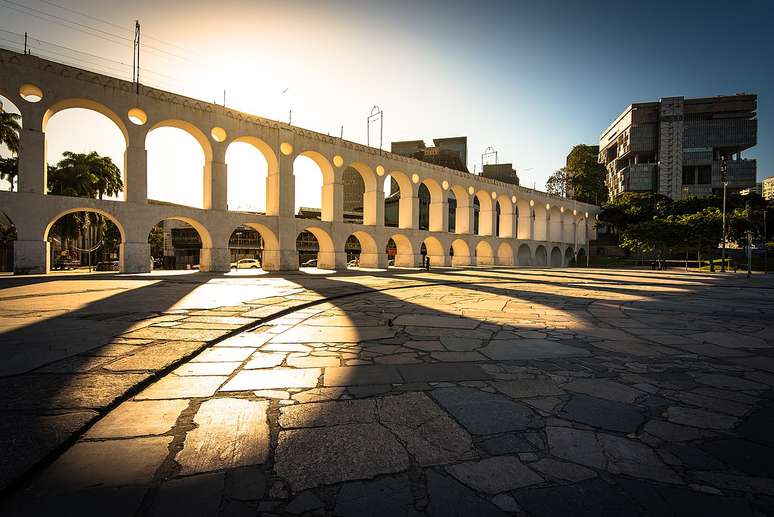One of the postcards of the city of Rio de Janeiro, an 18th century work, is one of the main symbols of Rio Antigo, in a renowned bohemian region
You Lapa arches they were built during the 18th century Also known as Carioca Aqueductthe work was designed to transport water from the source of the Rio Carioca with the aim of supplying the population of the city of Rio de Janeiro and over time it covered various roles in urban life until it became the postcard it is today.
After an initial structure with iron tubes, a raw material subject to corrosion, Gomes Freire de Andrade, then governor, ordered the reconstruction of the arches, which were reopened with the shape known today in 1750.
By will of the Count of Bobadela, as the governor was also called, the arches were rebuilt with stone and lime, mixed with whale oil. Thus a very resistant cement alloy was obtained, which at the time was the basis of civil construction.
A symbol of colonial Brazil
The Arcos da Lapa are considered the greatest architectural work of the colonial period and were designed in the Roman style. Built with enslaved labor – both indigenous and African –, the construction is 270 meters long and 17.6 meters high. The 42 double arches of the structure extend from the hill of Santa Teresa to the Carmelite Convent.
As an imposing construction in an era of generally low buildings, the aqueduct was visible from afar in old Rio, making it a symbol long before it was converted into a tourist attraction. Over time the Carioca Aqueduct became a meeting point for the population.
Arcos da Lapa as a tourist attraction
At the end of the 19th century the Carioca Aqueduct became obsolete. In 1896, no longer used for water transport, the work began to be used for route for trams of the city. This route is still used today to transport tourists and locals themselves.
Arcos da Lapa has also become a point of reference in landscape photography in Rio de Janeiro. The work has passed through the lenses of countless photographers. One of the most renowned was the Frenchman Jean Victor Frond. The portraits are published in the work Picturesque Brazil (1861), the first photographic book made in Latin America.
At the beginning of the 20th century Lapa underwent a series of renovations and demolitions. However, the arches remained and, in 1938, with the creation of the Iphan (Institute of National Historical and Artistic Heritage), they were protected by restriction.
Today the arches are among the main tourist attractions of a city full of places to see. The ancient aqueduct has become an architectural icon of a region famous for Bohemia. In fact, near Arcos da Lapa there are two of the most renowned concert halls in the city: Fundição Progresso and Circo Voador.
The whole area framed by the arches is full of bars and restaurants. Nearby are other tourist attractions such as the Escadaria Selarón and Praça Cardeal Câmara.
Find out more about the operation and tickets of the Santa Teresa tram
Source: Terra
Ben Stock is a lifestyle journalist and author at Gossipify. He writes about topics such as health, wellness, travel, food and home decor. He provides practical advice and inspiration to improve well-being, keeps readers up to date with latest lifestyle news and trends, known for his engaging writing style, in-depth analysis and unique perspectives.








